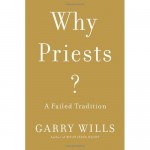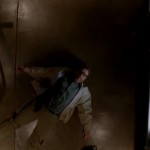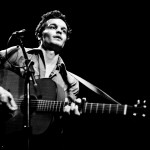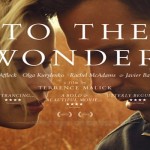When James Blake debuted on the independent music scene in 2011 with his self-titled first LP, his appeal lay not only in his musicianship and songwriting abilities, but in his unique, genre-defying sound. Fusing dubstep with serious classical piano chops, jazz chords, and soulful vocals, Blake’s music is strikingly unique, yet surprisingly cohesive. Pair all of this with charming interpersonal awkwardness and a British accent, and you have an instant commercial success. While it isn’t always the case that genuine talent is rewarded with success in the popular music industry, the novelty, yet accessibility, of Blake’s style won him an instant international following, all at the then-age of 22.
After such an acclaimed first album, listeners eagerly anticipated Blake’s second LP, Overgrown, released in April. Would Blake face the often-inevitable “sophomore slump” of an initially-successful artist’s second record? Would his music change drastically? Fortunately for Blake and his listeners, the answer to both questions is a simple, “No.” Blake’s second album was well-received by his listenership and critics alike, and his sound is still easily identified by the seamless juxtaposition of electronic sounds, piano licks, and R&B vocals. As reviewers at Pitchfork put it, Overgrownis a “real argument for the continued relevance of his dewy, electronic gospel-folk”—a description that appears comically paradoxical without listening to his work directly. While critics have described Blake’s second album as musically “showier” than his first, the essence of his music is the same, albeit evolved and matured over time.
More interesting, yet perhaps more subtle, is how Blake’s lyrical content has evolved from his first to second album. While his first album was certainly introspective, the lyrical content spanned a range of topics and did not seem particularly unified. In his second album, some clear themes emerge—particularly surrounding temporality and a desire for permanence. Since many listeners are primarily focused on Blake’s music as opposed to his lyrics, this newfound consistency is more of a value-add to his second album than any kind of deficiency in his first. At the same time, it poses his music, in some ways, as a megaphone for emerging adulthood—capturing the uncertainty and impatience of his 20-something peers as they grapple with issues of timing in their lives and relationships.
The title track sets the stage for this recurring theme: Blake laments the disposable nature of current culture and expresses his longing for permanence. He sings, “When things are thrown away like they are daily / Time passes in the constant state / if that is how it is/I don’t wanna be a star / But a stone on the shore / Long door, frame the wall / when everything’s overgrown.” The line “I don’t wanna be a star” seems to be a meditation on Blake’s musical career—his desire as an artist to not just achieve instant success, but to leave an enduring legacy. Yet his references to the natural world, and the “constant state” of “time passing” seem to refer to something even more fundamental— a desire for personal stability and longevity. In an age of transience, and an industry of short-lived success, Blake voices the desire to simply hold steady and endure. Musically speaking, this track is one of the more linear (i.e., less repetitive) pieces on the album. In long melodic lines, Blake drives steadily forward from verses to chorus to illustrate the forward passage of time and the tension of holding steadfast in a world in temporal flux.
While the title track may serve as the explicit expression of Blake’s desire for stability, several others seem to express the actual execution of change and uncertainty in his life. The primary device used here is repetition—both musical and lyrical. Blake’s songs generally have very few distinct lyrics, repeated over and over with ongoing underlying beats. While it is easy to dismiss this feature as a simple characteristic of his dubstep influences, the context created by Overgrown suggests something deeper. With reference to relationships, Blake frequently expresses his desire for connection that will endure, and that is unmarred by conflict. In “DLM,” he sings, “Please, don’t let me hurt you more” repeatedly, and in “To the Last,” he repeats, “I won’t have you tell me it went wrong… we’re going to the last, you and I.”
By repeating these lines to almost a pathological extent, he is both affirming his desires, and playing out the conflict over and over and over. Each iteration is, perhaps, one step closer to the certainty he seeks, yet each step is yet another simulation of the conflict he is avoiding. As he writes in “Life Round Here,” every attempt to move forward simply sends him “back to square one.” The obsessive frustration of this mindset, and the way it emotionally occupies him, is captured in “I am Sold” with the repeated statement, “And we lay nocturnal / Speculate what we feel.” This is a haunting image of the “dark side” of emerging adulthood—the insomniac tendency to “speculate” (really ruminate) about the current unsettled state of life. In a time of so many possibilities, uncertainty can be crushing.
In her pivotal New York Times article “What is it About 20-Somethings?,” Robin Henig describes psychologist Jeffrey Arnett’s characterization of the emerging adulthood: “identity exploration, instability, self-focus, feeling in-between and a rather poetic characteristic he calls ‘a sense of possibilities.’” While emerging adulthood has gotten a lot of attention in the sociological and psychological worlds, it seems to be filtering into artistic expression as well. Blake’s work, in particular, may be a very honest expression of the 20s as an iterative, repetitive process towards establishing career and long-term relationships: a time of excitement, but also introspection and anxiety over the unrealized desire for permanence. It is perhaps this honesty that undergirds the success of his work.

















